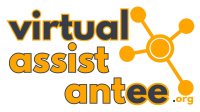In the realm of remote work, the significance of a dedicated workspace cannot be overstated. A well-defined area for work not only enhances productivity but also fosters a sense of professionalism. When individuals carve out a specific space in their homes, they signal to themselves and others that they are in work mode.
This separation from personal spaces helps to minimize distractions and allows for a more focused approach to tasks. Ideally, this workspace should be equipped with all necessary tools, such as a comfortable chair, a sturdy desk, and adequate lighting, creating an environment conducive to concentration and creativity. Moreover, the aesthetics of the workspace play a crucial role in influencing mood and motivation.
Personal touches, such as plants, artwork, or motivational quotes, can transform a mundane area into an inspiring haven. By curating an environment that reflects one’s personality and aspirations, individuals can cultivate a positive mindset that encourages productivity.
The act of physically entering this space can also serve as a psychological cue, signaling the brain to switch gears from personal to professional, thereby enhancing focus and efficiency throughout the workday.
Key Takeaways
- Creating a dedicated workspace helps to separate work from home life and increase productivity.
- Establishing a routine can help maintain a sense of normalcy and structure in a remote work environment.
- Setting boundaries with family members or roommates is important to minimize distractions and maintain focus.
- Utilizing technology for collaboration can help maintain communication and teamwork while working remotely.
- Taking breaks and avoiding burnout is crucial for maintaining mental and physical well-being while working from home.
Establishing a Routine
Creating a Balanced Daily Schedule
A well-defined daily schedule provides the necessary framework to ensure tasks are completed efficiently. This routine should encompass not only work hours but also breaks and personal time, creating a balanced approach to the day. By setting specific start and end times for work, individuals can create boundaries that help delineate professional responsibilities from personal life.
Signaling the Start and End of the Workday
In addition to time management, routines can also include rituals that signal the beginning and end of the workday. For instance, starting the day with a cup of coffee while reviewing goals or ending it with a brief reflection on accomplishments can instill a sense of purpose and achievement.
Enhancing Focus and Motivation
These small practices can enhance focus and motivation, making it easier to tackle tasks with enthusiasm. Ultimately, a well-structured routine can lead to increased productivity and a greater sense of control over one’s work life.
Setting Boundaries
This practice not only allows for necessary downtime but also promotes a healthier work-life balance.
By prioritizing self-care and personal time, individuals can return to their tasks with renewed energy and focus, ultimately enhancing their overall productivity.
Utilizing Technology for Collaboration
In today’s digital age, technology serves as a vital tool for collaboration among remote teams. Various platforms facilitate communication, project management, and file sharing, enabling seamless interaction regardless of geographical location. Tools such as video conferencing software allow teams to hold meetings in real-time, fostering connection and collaboration that might otherwise be lost in a remote setting.
By leveraging these technologies, individuals can maintain strong relationships with colleagues and ensure that projects progress smoothly. Moreover, utilizing collaborative tools can enhance productivity by streamlining workflows. Project management applications enable teams to assign tasks, set deadlines, and track progress in an organized manner.
This transparency fosters accountability and encourages team members to stay engaged with their responsibilities. Additionally, cloud storage solutions allow for easy access to shared documents, ensuring that everyone is on the same page. By embracing technology as an ally in collaboration, remote workers can create an efficient and cohesive working environment.
Taking Breaks and Avoiding Burnout
The importance of taking breaks cannot be underestimated in the pursuit of maintaining mental health and preventing burnout. Continuous work without intervals can lead to diminished focus and creativity over time. Therefore, incorporating regular breaks into the daily routine is essential for rejuvenation.
Short pauses throughout the day allow individuals to step away from their screens, stretch their bodies, and refresh their minds. This practice not only enhances productivity but also contributes to overall well-being. In addition to short breaks, longer periods of downtime are equally important for sustaining energy levels over the long term.
Engaging in activities outside of work—such as exercise, hobbies, or spending time with loved ones—can provide a much-needed respite from professional responsibilities. By prioritizing self-care and recognizing the signs of burnout early on, individuals can take proactive steps to recharge their batteries. Ultimately, fostering a culture that values breaks and mental health leads to more sustainable productivity and job satisfaction.
Dressing for Success
The Psychological Impact of Dressing Professionally
While it may be tempting to remain in loungewear throughout the day, dressing appropriately can have a profound impact on one’s mindset and productivity levels. When individuals take the time to dress professionally or at least in attire that makes them feel confident, they are more likely to approach their tasks with seriousness and focus.
Presenting a Polished Image
Dressing well can also influence how others perceive an individual during virtual meetings or interactions. Presenting oneself in a polished manner fosters professionalism and respect among colleagues. It demonstrates commitment not only to one’s own role but also to the team as a whole.
Cultivating a Professional Atmosphere
By embracing the practice of dressing for success, remote workers can cultivate an atmosphere of professionalism that enhances both individual performance and team dynamics. This simple act can serve as a powerful psychological trigger that signals readiness for work, leading to improved productivity and collaboration.
Communicating Effectively with Colleagues
Effective communication is the cornerstone of successful collaboration in any workplace setting, but it becomes even more critical in remote environments where face-to-face interactions are limited. Clear communication helps prevent misunderstandings and ensures that everyone is aligned on goals and expectations. Utilizing various communication tools—such as instant messaging platforms for quick questions or emails for more formal correspondence—can facilitate smooth interactions among team members.
Additionally, active listening plays a vital role in effective communication. When engaging with colleagues during meetings or discussions, individuals should strive to be fully present and attentive. This practice not only fosters mutual respect but also encourages open dialogue where everyone feels valued and heard.
By prioritizing clear communication and active listening skills, remote workers can build stronger relationships with their colleagues and contribute positively to team dynamics.
Balancing Work and Personal Life
Achieving a healthy balance between work and personal life is essential for long-term success in remote work settings. The flexibility that comes with working from home can be both a blessing and a curse; without proper boundaries in place, individuals may find themselves working longer hours or feeling guilty about taking time off. To combat this challenge, it is crucial for individuals to prioritize their personal lives just as they do their professional responsibilities.
Establishing designated times for personal activities—whether it be family dinners, exercise routines, or leisure pursuits—can help reinforce this balance. By treating personal time with the same importance as work commitments, individuals can cultivate a more fulfilling lifestyle that encompasses both professional aspirations and personal happiness. Ultimately, achieving this equilibrium leads to greater job satisfaction and overall well-being, allowing individuals to thrive both at work and in their personal lives.
In conclusion, navigating the world of remote work requires intentional strategies that promote productivity while safeguarding mental health and personal fulfillment. From creating dedicated workspaces to establishing routines and setting boundaries, each element plays a crucial role in fostering success in this evolving landscape. By embracing technology for collaboration, prioritizing breaks, dressing for success, communicating effectively with colleagues, and balancing work with personal life, individuals can create an enriching remote work experience that enhances both professional growth and personal satisfaction.
If you’re looking to break into the C-suite as a virtual assistant, check out this insightful article on Breaking Into the C-Suite: Virtual Assistants Support. It offers valuable tips and strategies for advancing your career and gaining the support you need to succeed in high-level positions. Additionally, the 5 Daily Habits Every Successful Virtual Assistant Follows article provides practical advice for staying organized and productive in your remote work environment.
FAQs
What are some expert tips for staying productive while working from home?
Some expert tips for staying productive while working from home include creating a designated workspace, establishing a routine, setting clear boundaries, taking regular breaks, and minimizing distractions.
How can one thrive while working from home?
To thrive while working from home, it is important to prioritize self-care, maintain a healthy work-life balance, stay connected with colleagues, seek professional development opportunities, and embrace flexibility.
What are some common challenges of working from home?
Common challenges of working from home include feelings of isolation, difficulty in setting boundaries between work and personal life, potential distractions, and the lack of separation between home and work environments.
What are some effective strategies for managing time while working from home?
Effective strategies for managing time while working from home include creating a daily schedule, prioritizing tasks, utilizing time management tools, setting realistic goals, and practicing time-blocking techniques.
How can one maintain a healthy work-life balance while working from home?
To maintain a healthy work-life balance while working from home, it is important to establish boundaries, designate specific work hours, prioritize self-care, and make time for leisure activities and personal relationships.

